Dr. Ashwin Rajadesingan
CMS 367P: Social Media Analysis
Fall 2024
Why PBL?
The PBL structure with its emphasis on building towards undertaking the final project throughout the course helped students stay the course in my quantitative reasoning flagged coursed. It made the class engaging and fun as students could see what they were building towards, reducing the anxiety of programming for the first time.
I think of PBL as a way to streamline my course content so that it is directly applicable to the real world. This allows the instructor to make adjustments to the existing course material to fit PBL as a more authentic approach. The results are clear based on student evaluations that project-based learning works!

Ashwin Rajadesingan, PhD
Assistant Professor, Communication Studies
This course was organized very well to be a stepping stone journey from introduction to difficult coding. I had trepidations over taking this course, especially since I entered later than others, but am very grateful I can now say I have coding skills. Although there were frustrations, it made the success all the much greater. Dr. R was very open to questions (even some that were time consuming) and would visually show different errors and debug them with us.
The Launch

Problem Statement
How can content creators leverage data and AI skill sets to contribute to compelling social media campaigns?
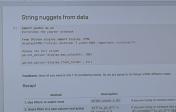
Driving Questions
- How can we integrate data-driven practices to support real-world applications for emerging communication professionals?
- How can we effectively communicate insights from data to stakeholders and audiences?
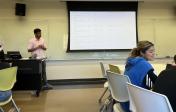
Need-to-Knows
- How to collect social media data?
- How to find data nuggets with code?
- How to find text nuggets with code?
Practicing the code, writing it myself, in the first few weeks was very helpful. Also giving us problems where we had to think really challenged me to work through the code and come up with my own solutions.
Active Learning
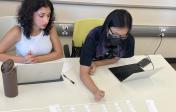
Sustained Inquiry
Students had to complete a LINCS (Learning and Improving New Coding Skills) assignments every week in groups of 2 or three. Each assignment was on topics we covered that week.
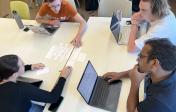
Feedback Loops
Exit tickets were used daily to assess student comfort with the material and, based on that, the learning pathway was adjusted.
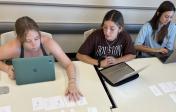
Student Choice and Voice
Students could choose the topic for their projects on their own. They worked in groups throughout the class and were able to discuss with each other and voice questions.
I loved the [interactive cards] we were given each day for class. It was nice that some information was already filled out, so that we could see what we were doing and what the new function or variable does, followed by questions we used to practice the new skill after that. This was also super helpful to be able to go back and look at when that information popped up again weeks later.
The Learning Product
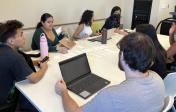
Final Project
Throughout the semester, students were learning how to code for retrieval and analysis of social media data to inform a pitch to a client. Students were asked to identify a "client" (company or nonprofit) that would likely use social media data in the decision-making process for marketing. Then, student groups built their client pitch by applying their coding skills.
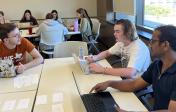
Critique and Revision
The weekly LINCS (Learning and Improving New Coding Skills) assignments provided the necessary chunking or manageable segments of learning. I was able to give students specific feedback as formative assessment to allow for continuous growth in coding skills.
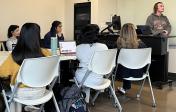
Final Project Rubric
The final presentation was assessed based on how well their analyses were presented, tailored towards their target audience and without the use of technical jargon.
I enjoyed the feedback assignments at the end of class in which the professor asked the students for their confidence level on the material and if they needed any concepts reexplained. I liked this because the professor would occasionally answer questions students asked within the section and I would not have to email or go to office hours to get a response.
Final Presentations
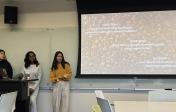
Final Presentations
The presentation was a role playing exercise. I asked students to imagine that they are presenting to a stakeholder interested in the findings of their project. These people may be company/nonprofit representatives, researchers, marketing agencies, social media content teams etc.
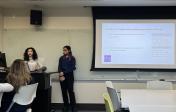
Presentation Structure
Before the start of the presentation, students introduced the client. Each presentation contained:
- 1 slide - Introduction to the topic
- 1-2 slides - Overview of questions and the significance to the client
- 1-2 slide per result - Interpretation of results and implications
- Use of graphs.
- 1 slide - Reflection on possible project improvements
- 1 summary slide

Final Reflections
I designed reflection to be a continuous process where each week, they would reflect on things we had discussed and ask questions through the exit tickets.
I was also able to reflect on my own journey in creating and implementing project-based learning with my colleagues to strengthen my teaching practice and improve my students' learning experience.

